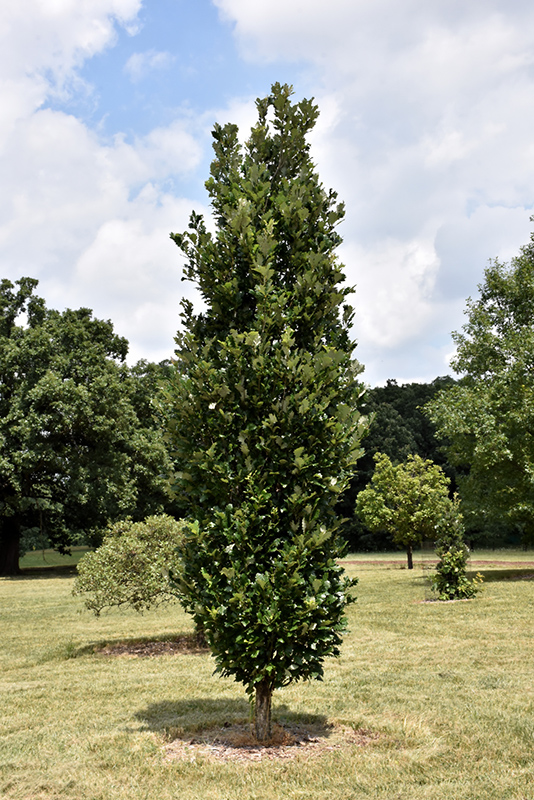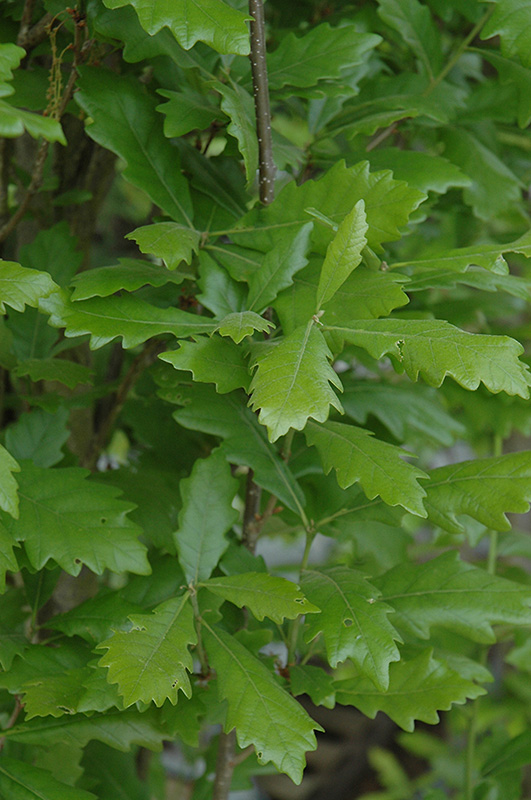>> Home
Regal Prince English Oak
Quercus 'Regal Prince'
Height: 30 feet
Spread: 12 feet
Sunlight:
![]()
Hardiness Zone: 4
Other Names: Truffle Oak
Description:
A tall and stately hybrid oak with a symmetrical narrowly oval habit of growth, ideal where a narrow form is needed; tough and adaptable, faster growing than other oaks
Ornamental Features
Regal Prince English Oak has dark green deciduous foliage on a tree with an oval habit of growth. The lobed leaves do not develop any appreciable fall color.
Landscape Attributes
Regal Prince English Oak is a dense deciduous tree with a shapely oval form. Its average texture blends into the landscape, but can be balanced by one or two finer or coarser trees or shrubs for an effective composition.
This is a relatively low maintenance tree, and is best pruned in late winter once the threat of extreme cold has passed. It is a good choice for attracting squirrels to your yard. It has no significant negative characteristics.
Regal Prince English Oak is recommended for the following landscape applications;
- Shade
- Vertical Accent
- Hedges/Screening
Planting & Growing
Regal Prince English Oak will grow to be about 30 feet tall at maturity, with a spread of 12 feet. It has a low canopy with a typical clearance of 4 feet from the ground, and should not be planted underneath power lines. It grows at a slow rate, and under ideal conditions can be expected to live to a ripe old age of 300 years or more; think of this as a heritage tree for future generations!
This tree should only be grown in full sunlight. It prefers to grow in average to moist conditions, and shouldn't be allowed to dry out. It is not particular as to soil type or pH. It is highly tolerant of urban pollution and will even thrive in inner city environments. This is a selected variety of a species not originally from North America.

